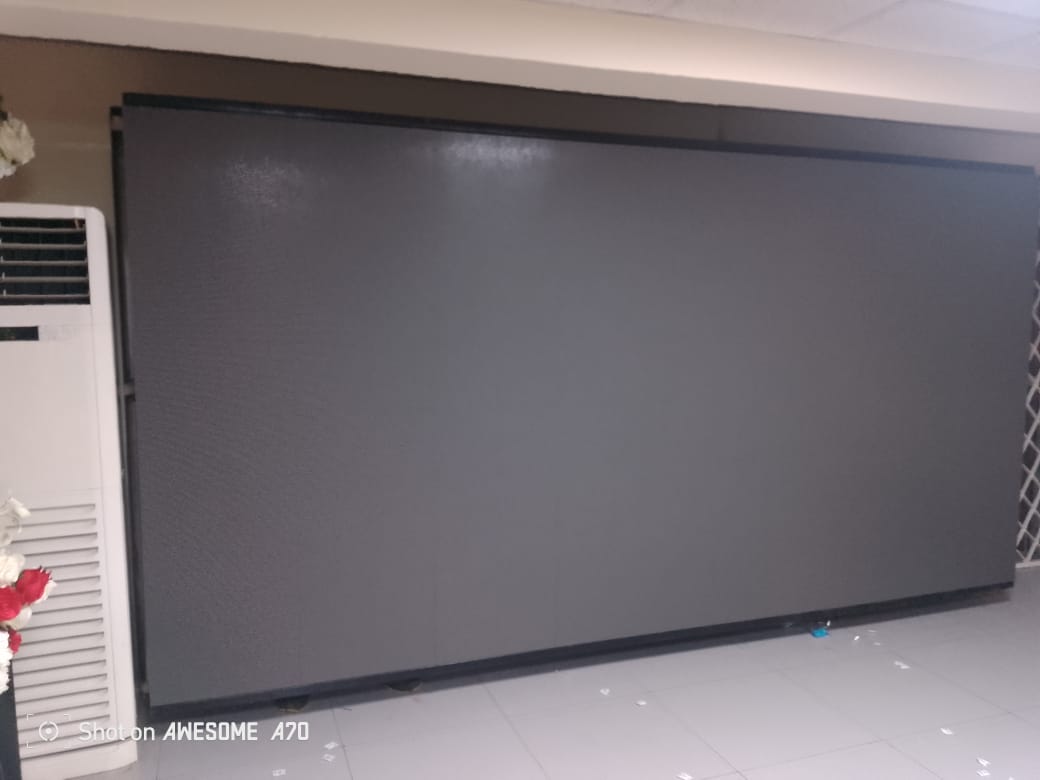Einführung
Installing an LED screen at home can greatly enhance your living space, whether you’re creating a home theater, setting up a gaming corner, or upgrading your entertainment system.
With its superior picture quality and sleek design, an LED screen for home installation offers a modern solution for both casual viewing and immersive experiences. In this guide, we’ll explore the benefits, types, and installation tips to help you choose the right LED screen for your home.

Why Choose an LED Screen for Your Home?
LED screens offer several advantages over traditional TV sets, making them a top choice for home installations. Here’s why an LED screen is worth considering:
1. Superior Picture Quality
LED screens deliver brighter images with high contrast, making them perfect for both well-lit and dark rooms. Whether you’re watching movies or gaming, the clarity and sharpness are unmatched.
2. Energy Efficiency
Compared to other types of displays, LED screens are energy-efficient, consuming less power while providing excellent visual performance. This helps you reduce electricity bills without compromising on image quality.
3. Sleek Design
LED screens have thin, lightweight designs, making them easy to mount on walls or place on stands. Their modern aesthetic fits seamlessly into any home décor.
4. Versatility
An LED screen can serve multiple purposes—watching movies, gaming, streaming live content, and even as a digital art piece or smart home interface. It’s a multifunctional solution for modern living spaces.

Types of LED Screens for Home Installation
When considering an LED screen for home use, it’s important to understand the different types available and which one best suits your needs. Below are some of the most popular options:
1. Indoor LED Displays
Perfect for home theaters, living rooms, or gaming setups, indoor LED displays offer high resolution and vibrant colors. Models like P1.9 or P2.5 are ideal for close-up viewing and deliver an immersive experience.
2. Outdoor LED Displays
If you have an outdoor entertainment area, an outdoor LED screen can withstand the elements. These displays are designed for brighter environments and are weather-resistant, making them perfect for gardens, patios, or balconies.
3. LED Video Walls
For those looking for a more advanced, professional setup, an LED video wall can cover a large area with multiple screens arranged seamlessly. This is a great choice if you want a visually impressive setup for a dedicated media room or home theater.
Factors to Consider Before Buying an LED Screen
1. Resolution and Pixel Pitch
For a clear and sharp image, ensure that the LED screen you choose has a high resolution. The pixel pitch, which determines the density of pixels on the screen, also affects the clarity—smaller pixel pitches like P1.9 deliver superior quality for smaller rooms.
2. Size of the Screen
The size of the LED screen should be in proportion to the space where you plan to install it. Larger screens, such as 75 inches or more, are great for spacious rooms, while smaller screens are better suited for compact areas.
3. Refresh Rate and Brightness
A high refresh rate and adequate brightness are essential for smooth visuals, especially when watching action-packed scenes or gaming. Look for an LED display with a refresh rate of at least 120Hz and a brightness of over 800 nits for optimal performance.
4. Mounting Options
Consider how you want to mount or place the LED screen. Wall mounts and stands are the most common options, but some models also allow for flexibility in mounting or placing the screen in unconventional positions.


Space, Lighting, and Camera Integration
Proper space planning is key when installing an LED screen. Think about room layout, lighting conditions, and the placement of other devices like cameras.
If you’re setting up a home theater or gaming station, make sure the screen is positioned at the optimal viewing angle, and the lighting complements the display.
For those planning to use the screen for streaming or live presentations, consider how the camera integrates with the LED setup. Avoid direct light sources facing the screen to minimize glare and enhance visibility.
Content Creation and Design
When setting up your LED display, consider the types of content you will display. Custom-designed content, interactive media, and high-quality video files will make the most out of your LED screen’s capabilities. Ensure that the content you plan to display is optimized for the screen’s resolution and aspect ratio.
1. Templates and Formats
For a professional setup, you can use custom templates or software to design your content. These tools will help you ensure that the content fits perfectly on your screen and runs smoothly.
2. Frame Rate and Material Formats
Ensure your videos and images are in formats that support high frame rates (at least 30 fps) to prevent lag or stuttering on the screen. File formats like MP4, MOV, or PNG are widely supported for LED displays.
Installation and Hardware Integration
LED screens often require additional hardware, such as media servers, HDMI cables, and streaming devices. Depending on the model you choose, installation can vary.
Some screens are plug-and-play, while others may require professional installation for mounting or setting up the media system.
1. Media Server and OBS Setup
For those integrating the LED display with streaming setups or live presentations, media servers and software like OBS Studio can ensure smooth content delivery. These systems allow you to control the media, reduce latency, and create high-quality streams.
2. Audio Integration
LED displays often don’t come with integrated audio. If you need sound for your setup, consider investing in external speakers or a sound system that complements the LED screen’s visual output.

Buy or Rent? Making the Right Decision
When it comes to acquiring an LED screen, you’ll need to decide whether to buy or rent. Buying offers long-term investment, while renting is ideal for temporary setups, such as events or exhibitions.
Be sure to evaluate your needs, the duration of the installation, and your budget before making a decision.
Troubleshooting and Maintenance
LED screens require minimal maintenance, but regular cleaning and software updates are essential for maintaining optimal performance. Also, having spare parts like replacement panels or cables on hand can save time during unexpected technical issues.
Key Troubleshooting Tips:
- Screen Flickering: Check the cables and connections for loose or damaged parts.
- Low Brightness: Adjust the brightness settings or check if the power supply is functioning properly.
- Dead Pixels: Contact the manufacturer for repairs or replacements.
Abschluss
Installing an LED screen at home can greatly enhance your entertainment setup. With a wide variety of options available, it’s important to consider factors like screen size, resolution, and mounting options to make the best choice for your space.
Whether you’re upgrading your living room, building a home theater, or creating a gaming paradise, an LED display offers unmatched quality and versatility.
Call to Action
Explore a wide range of LED screens for home use today. From indoor displays to custom video walls, discover the perfect fit for your space and elevate your viewing experience. Reach out to our team for more information on the best LED displays available.

Author:Amy



